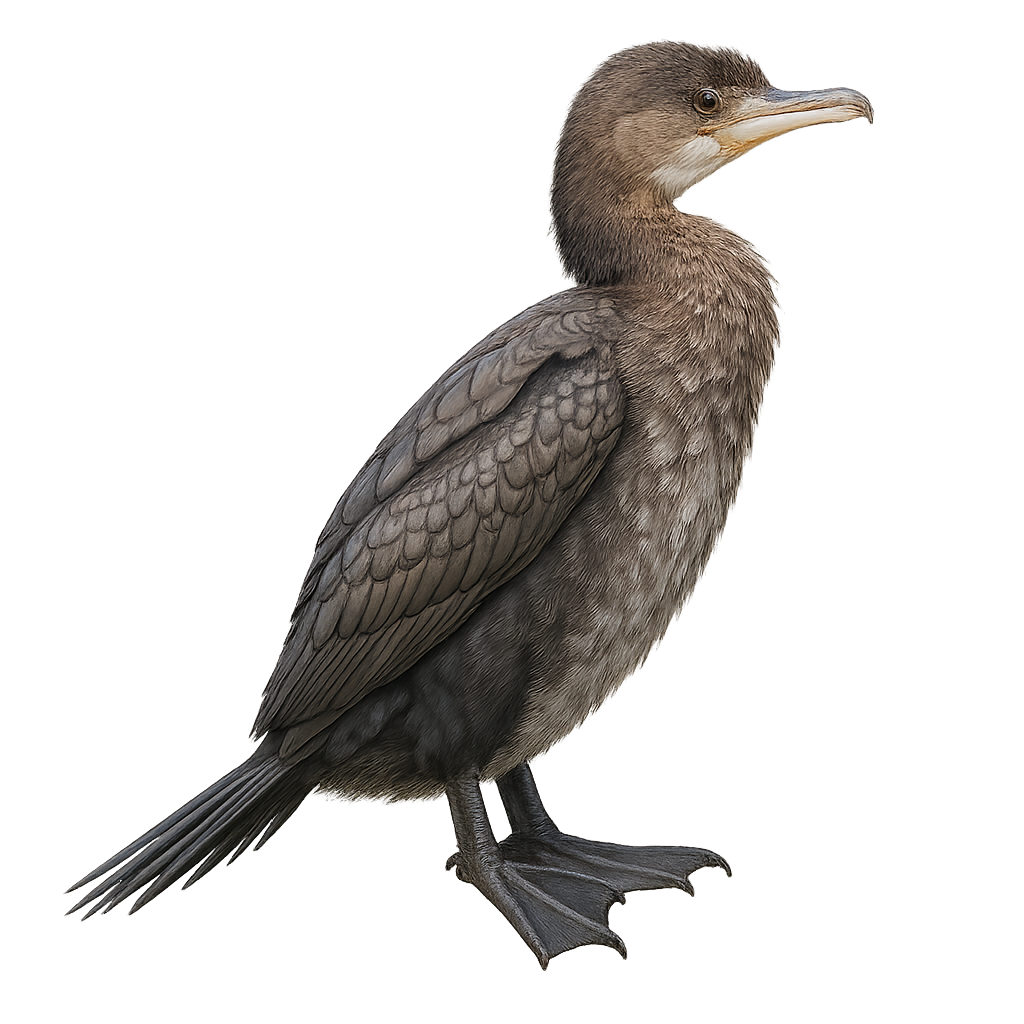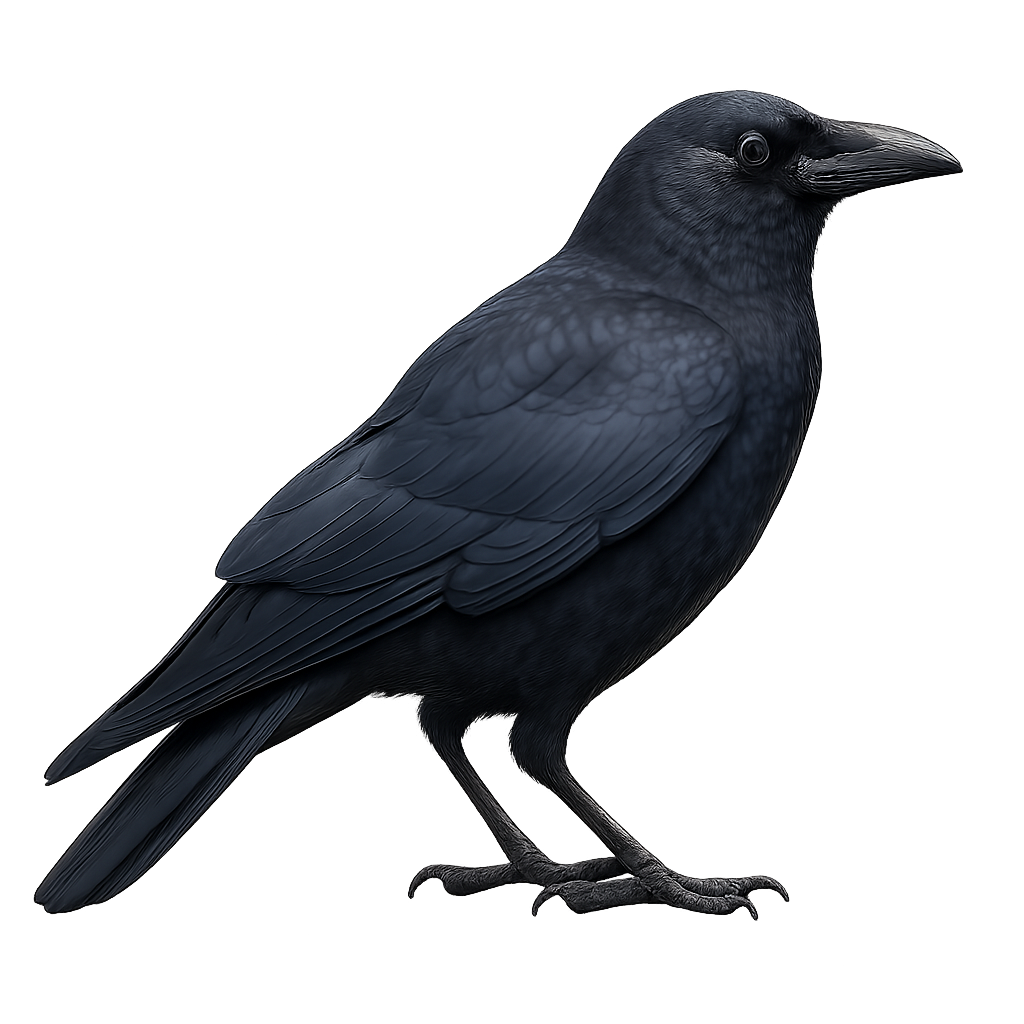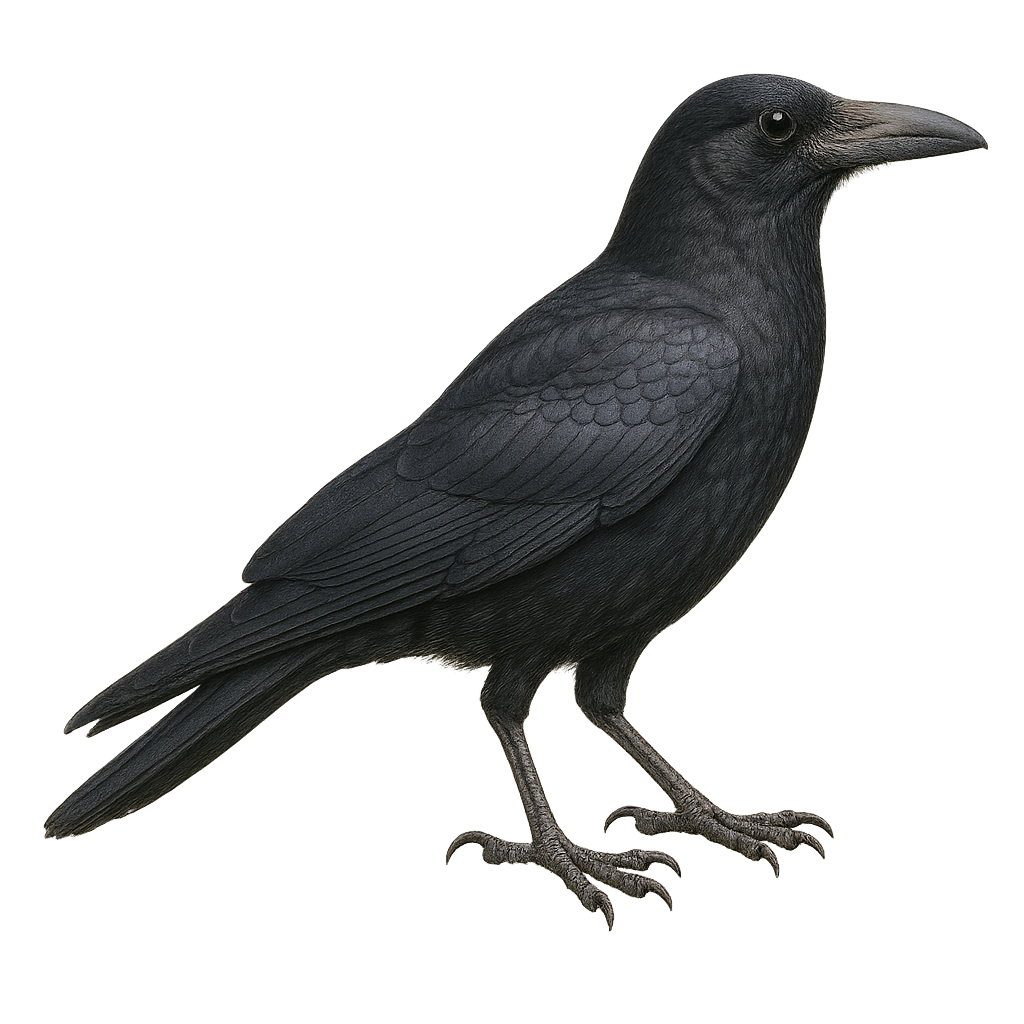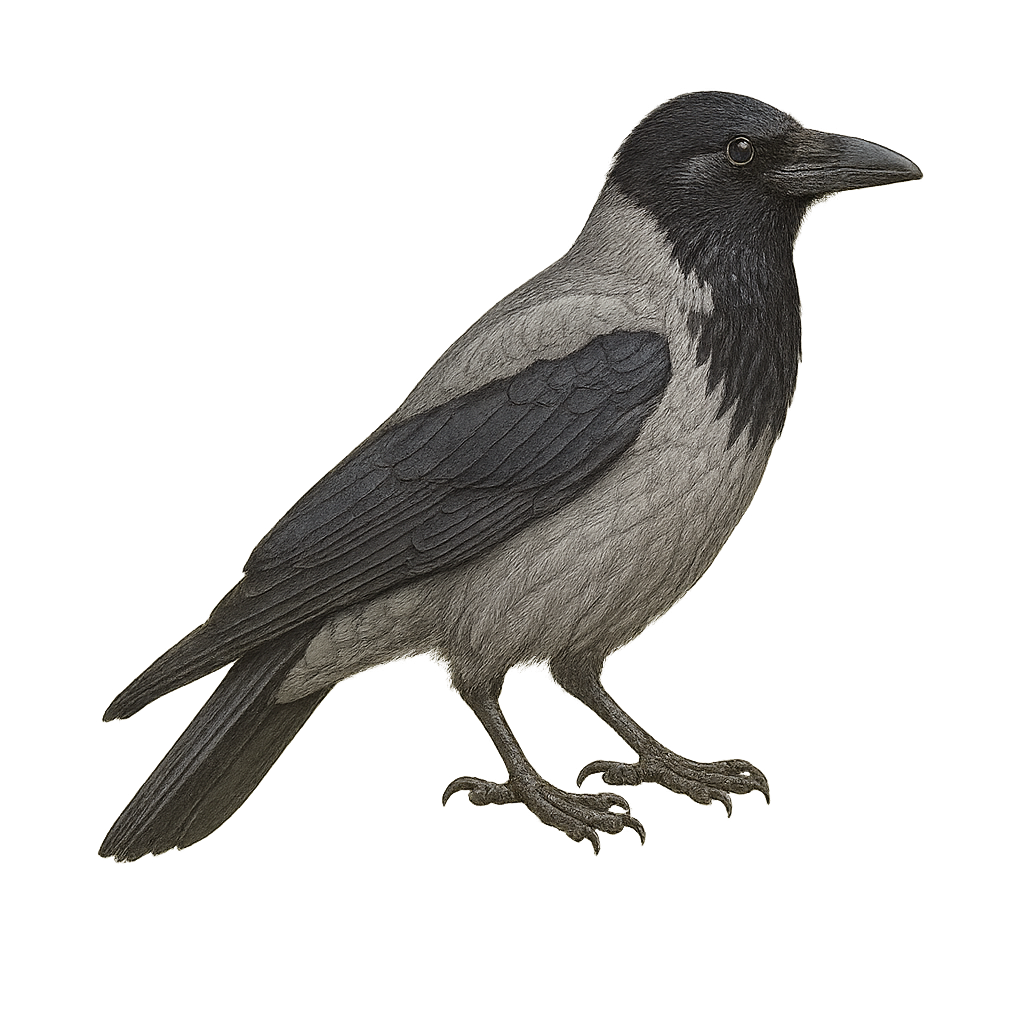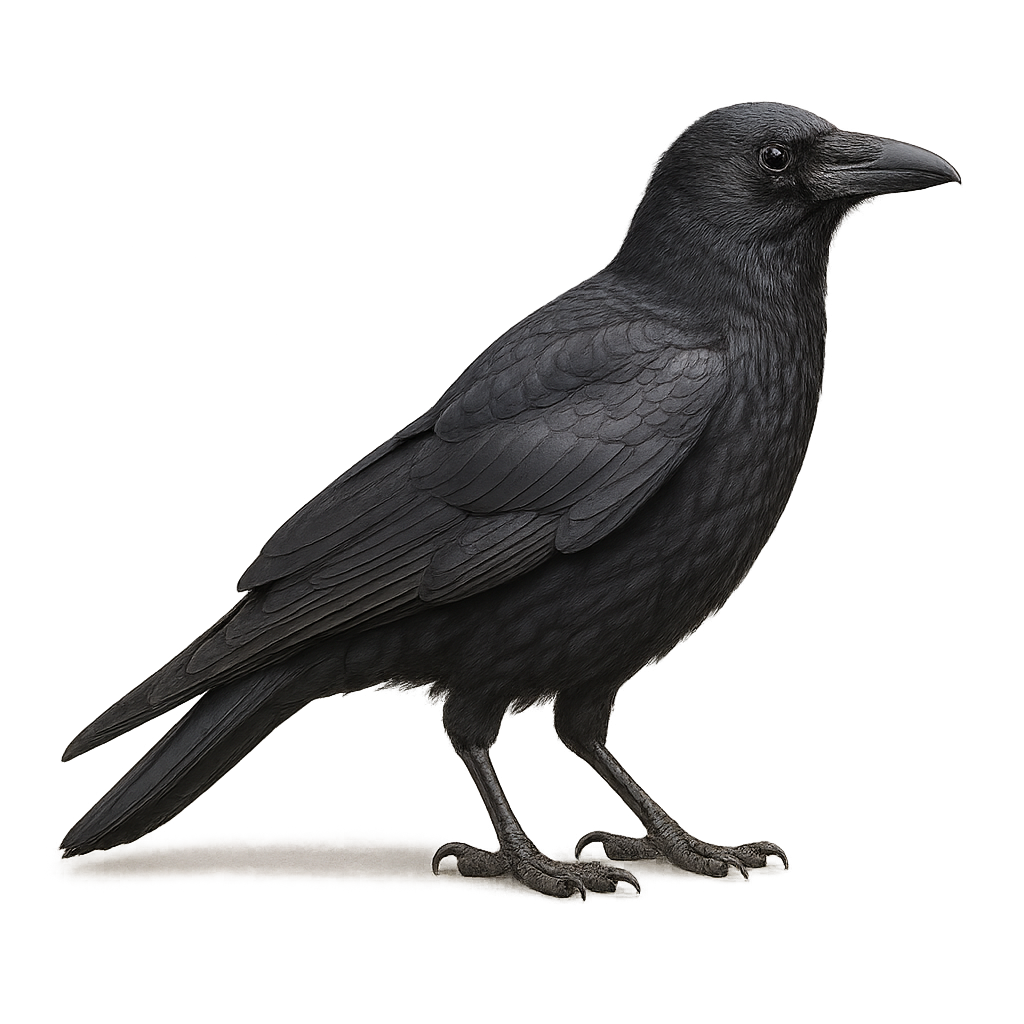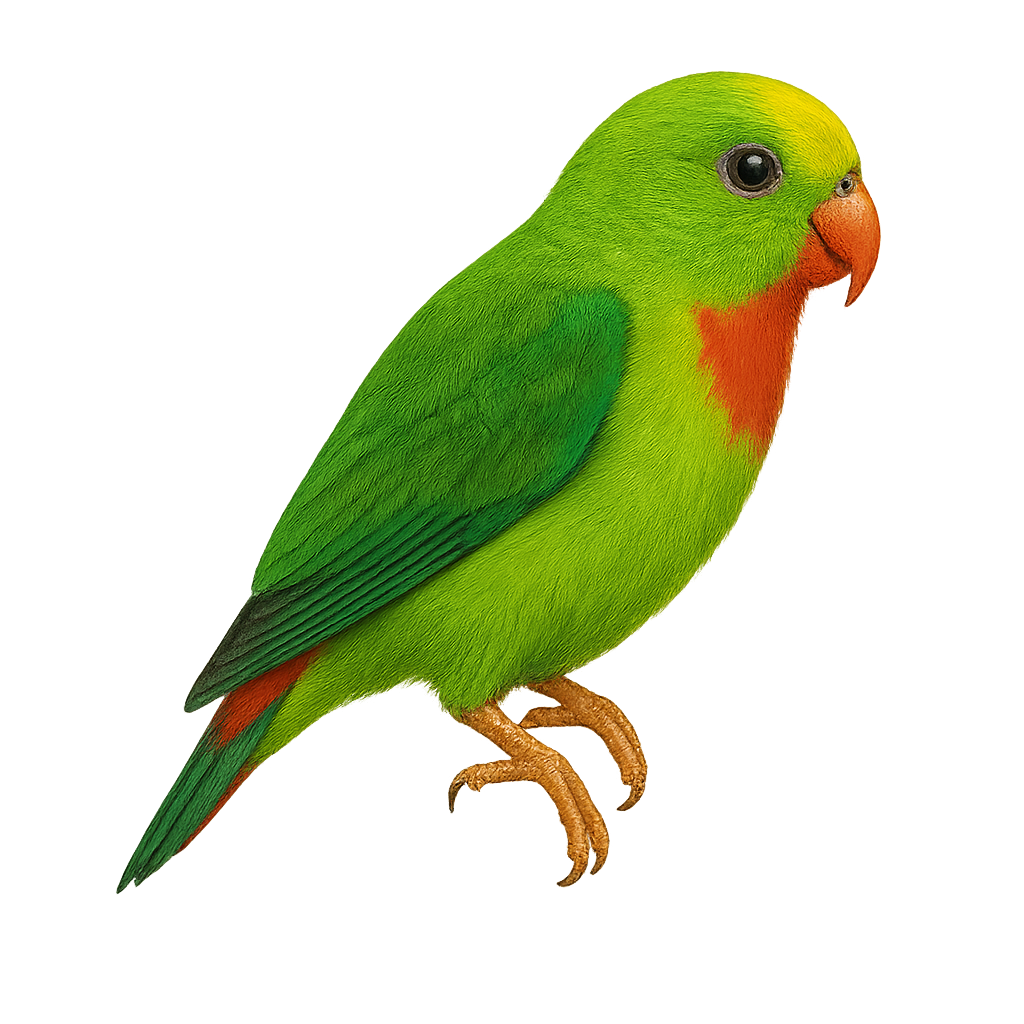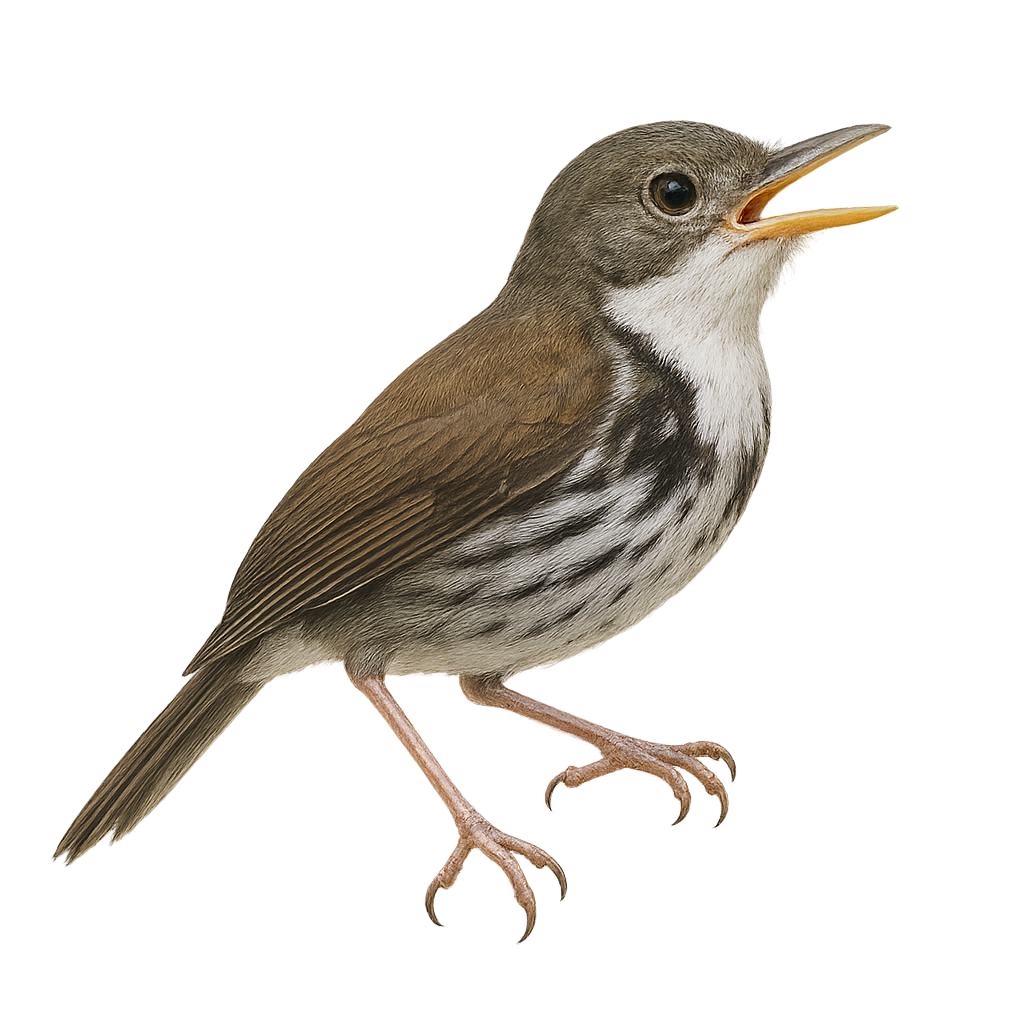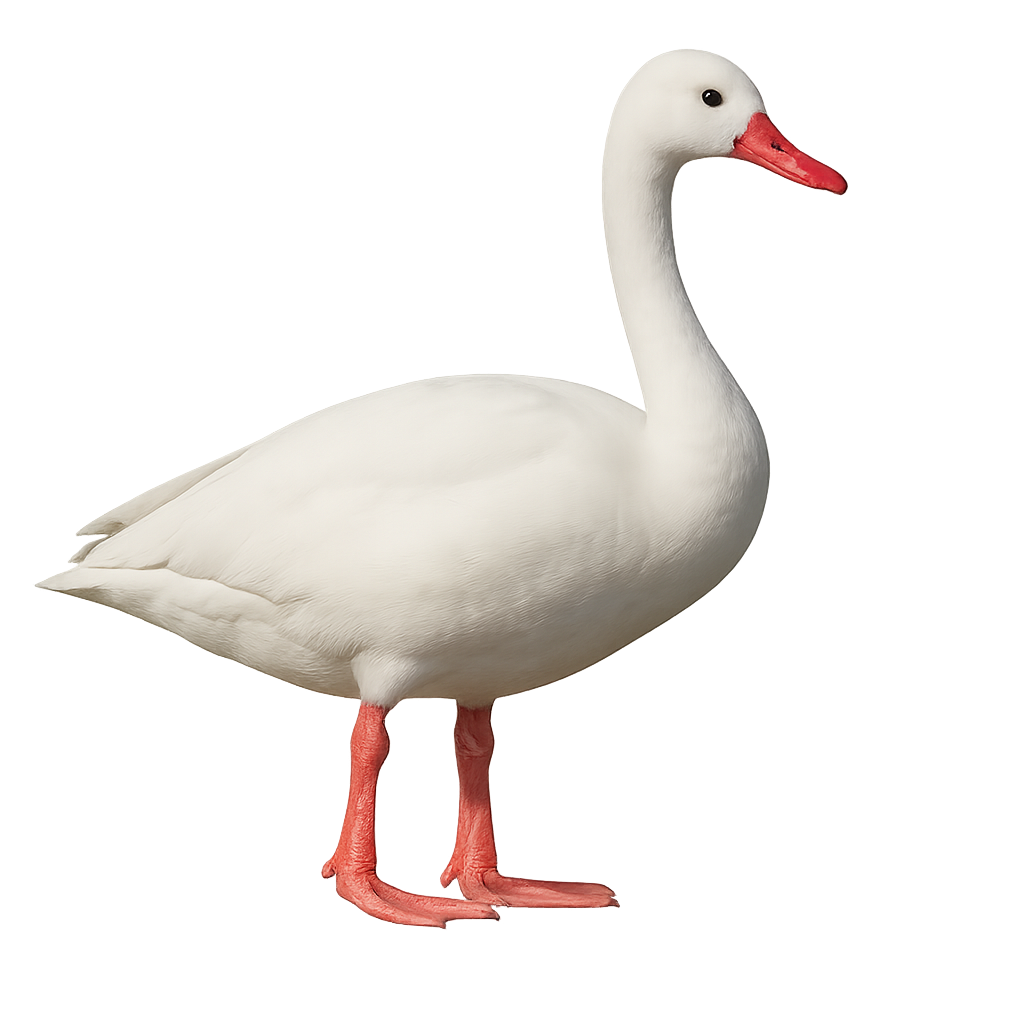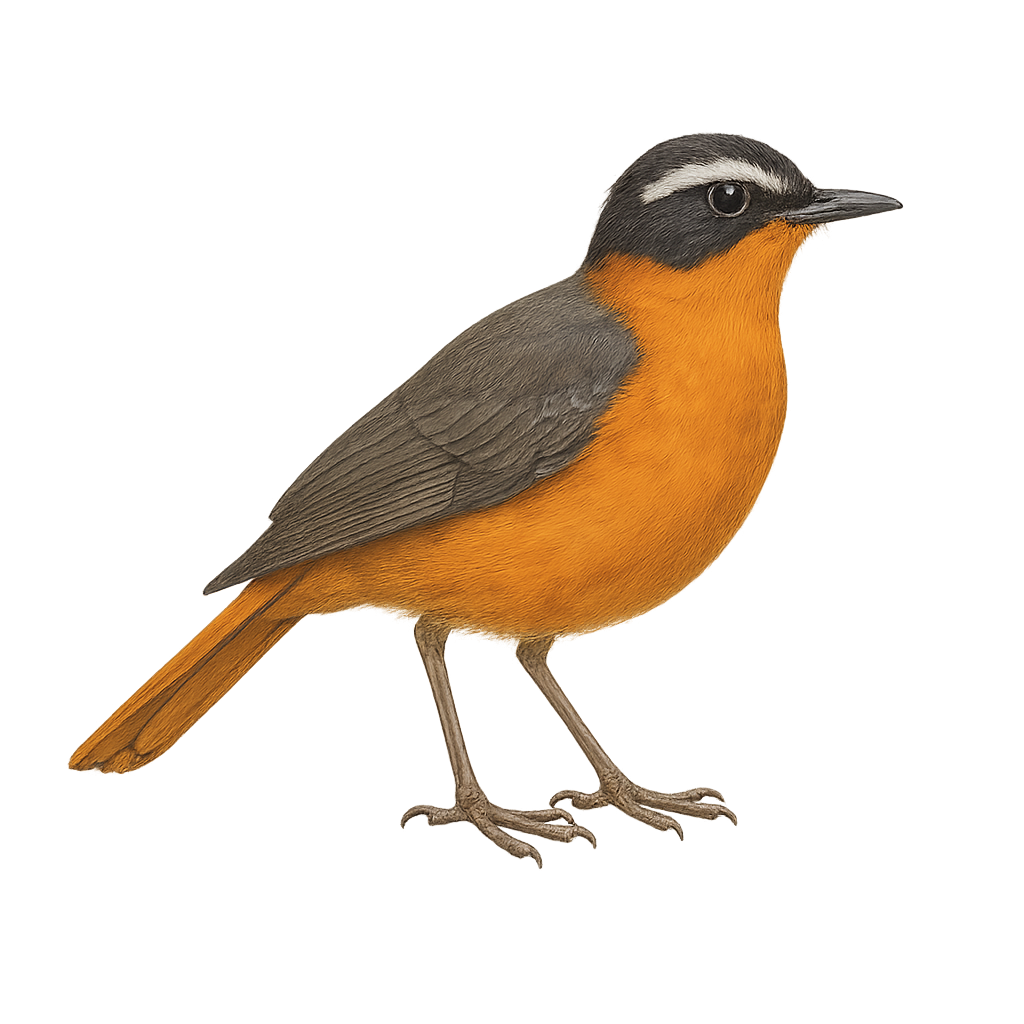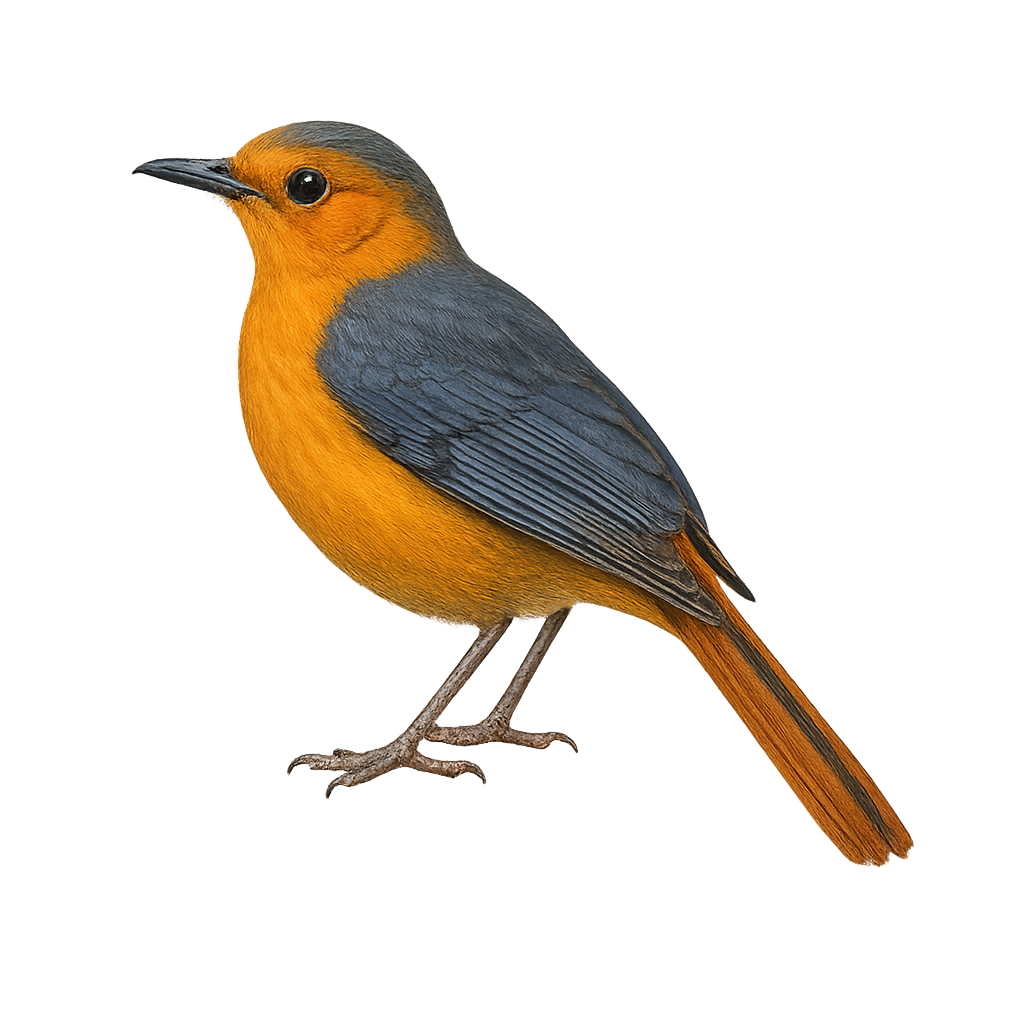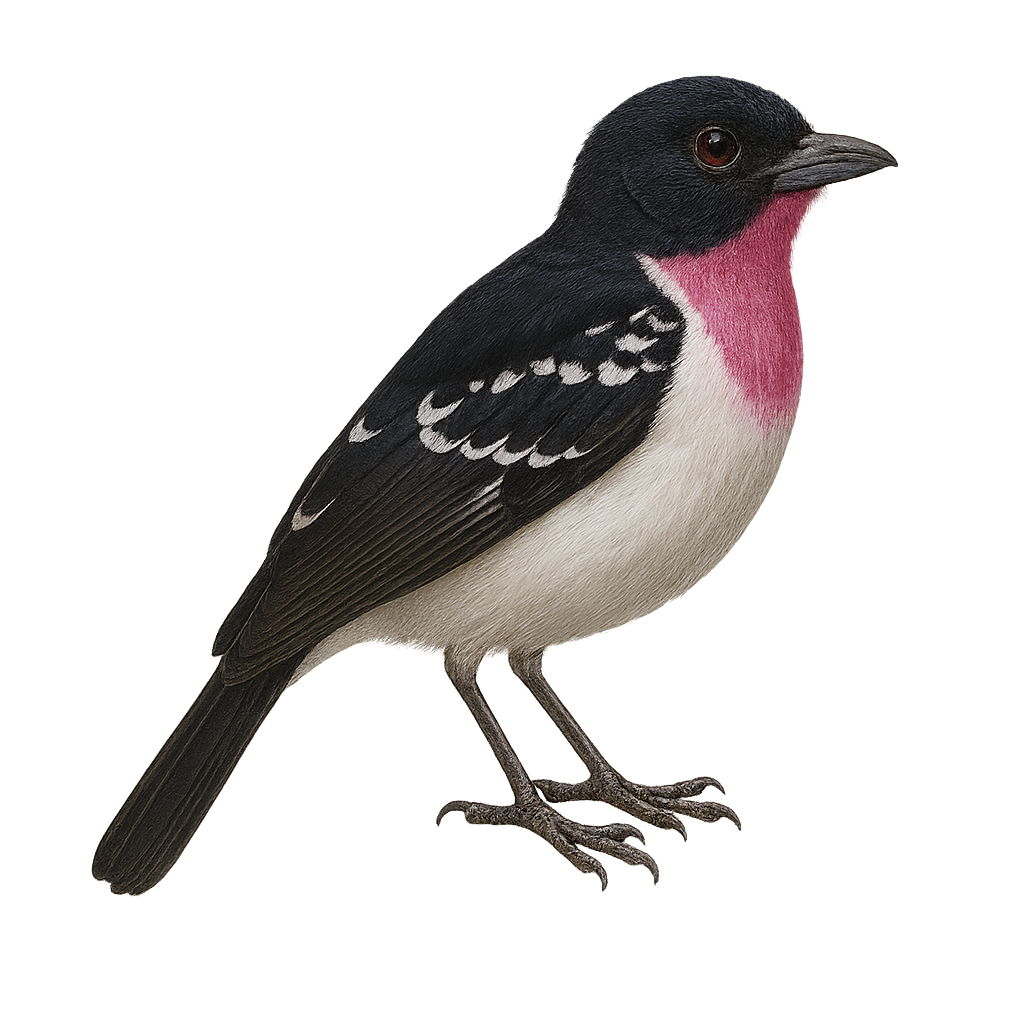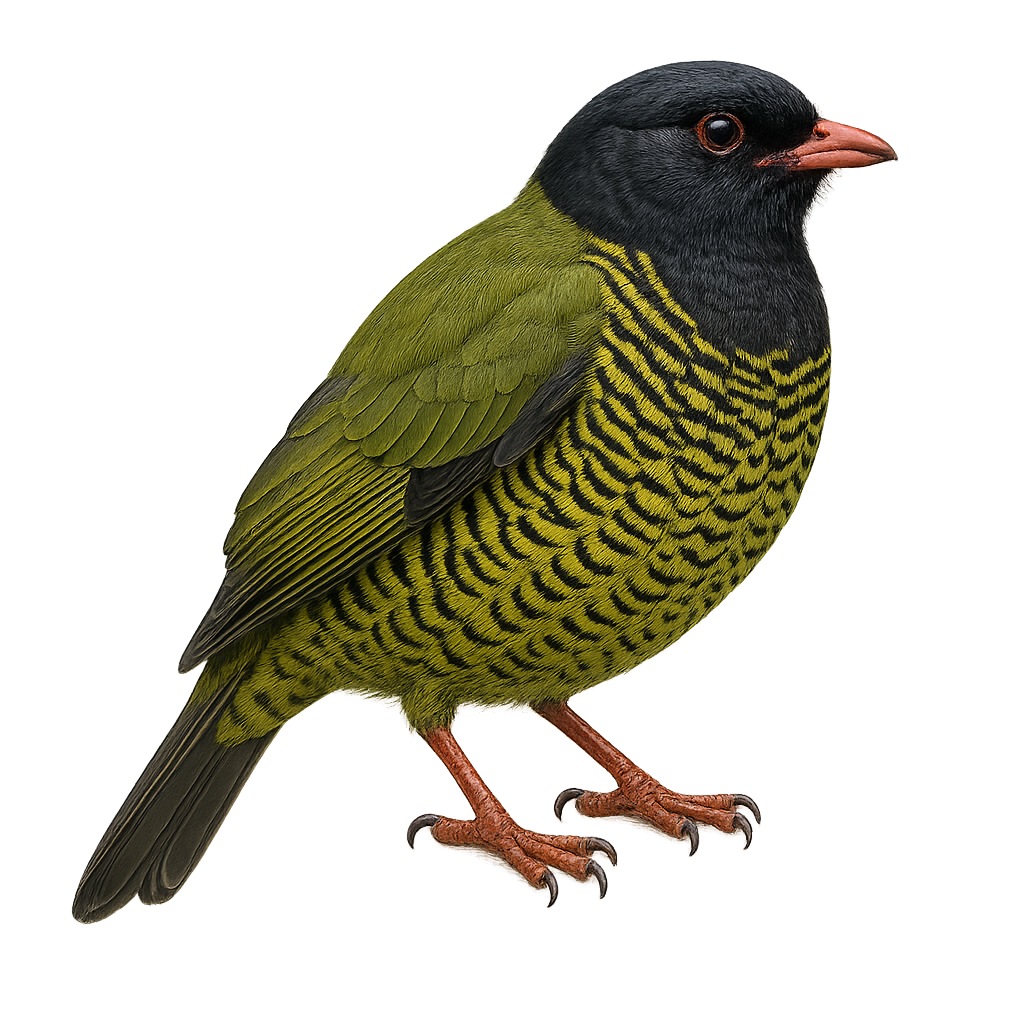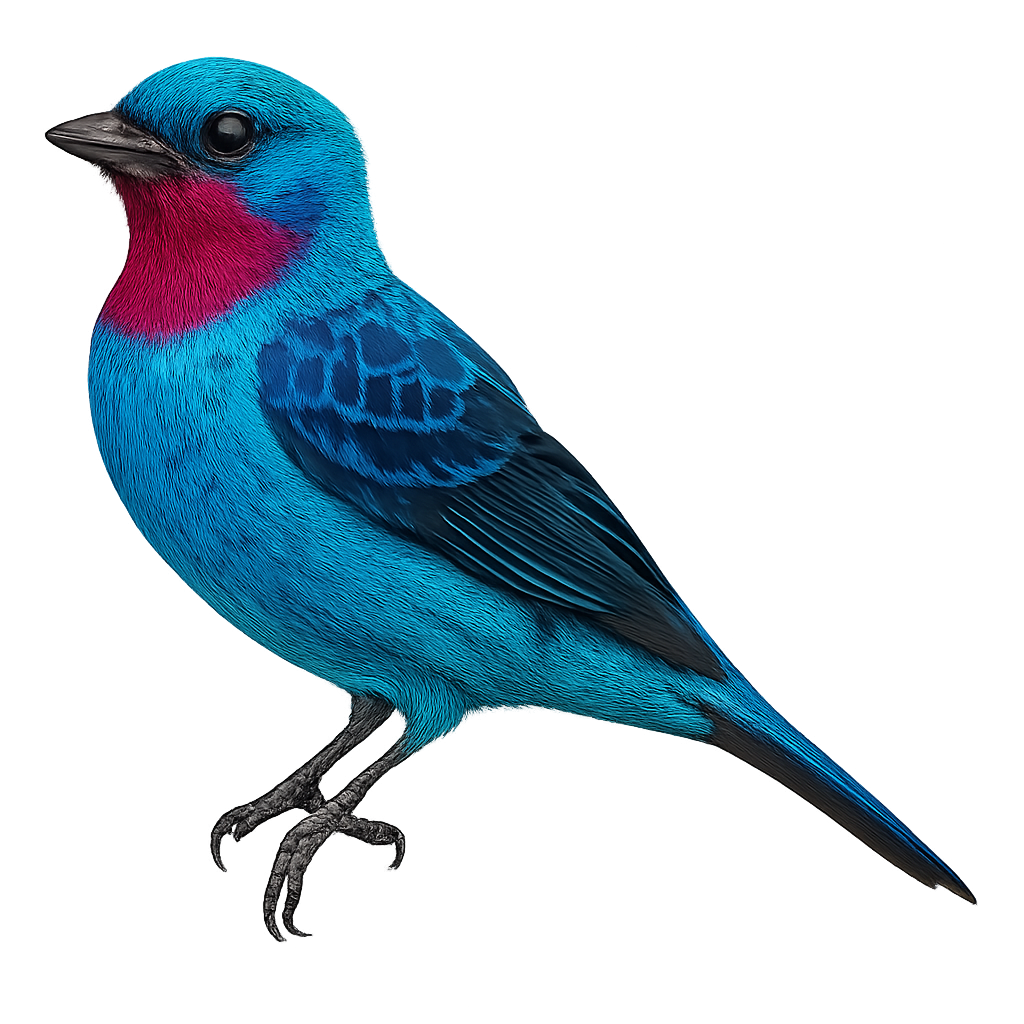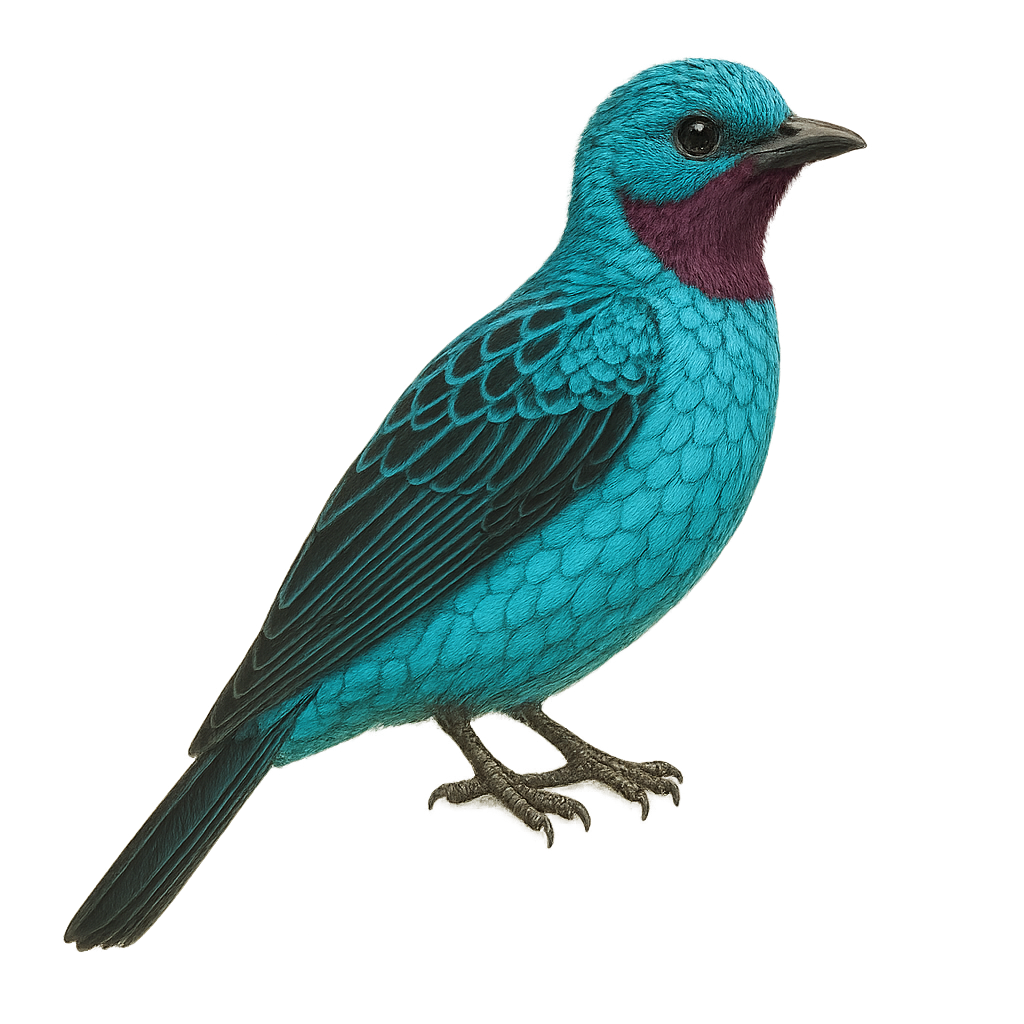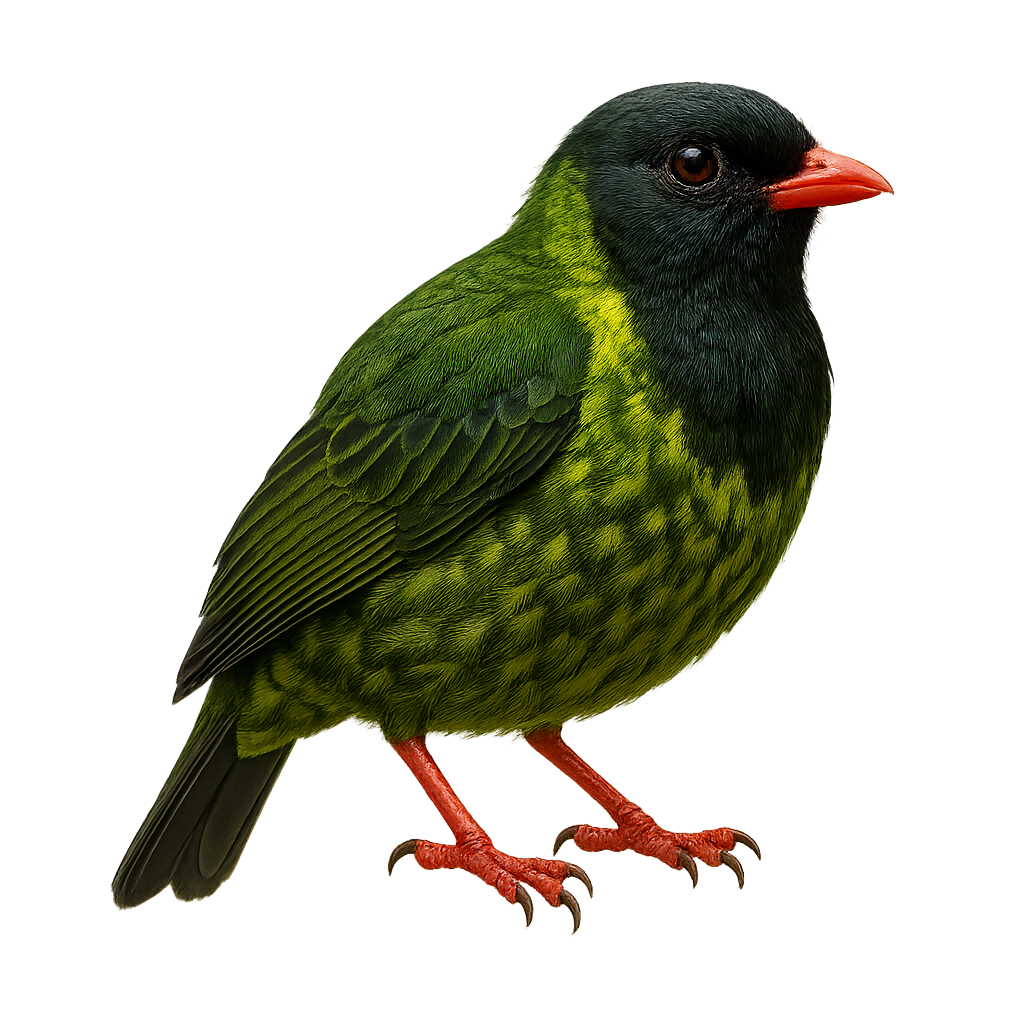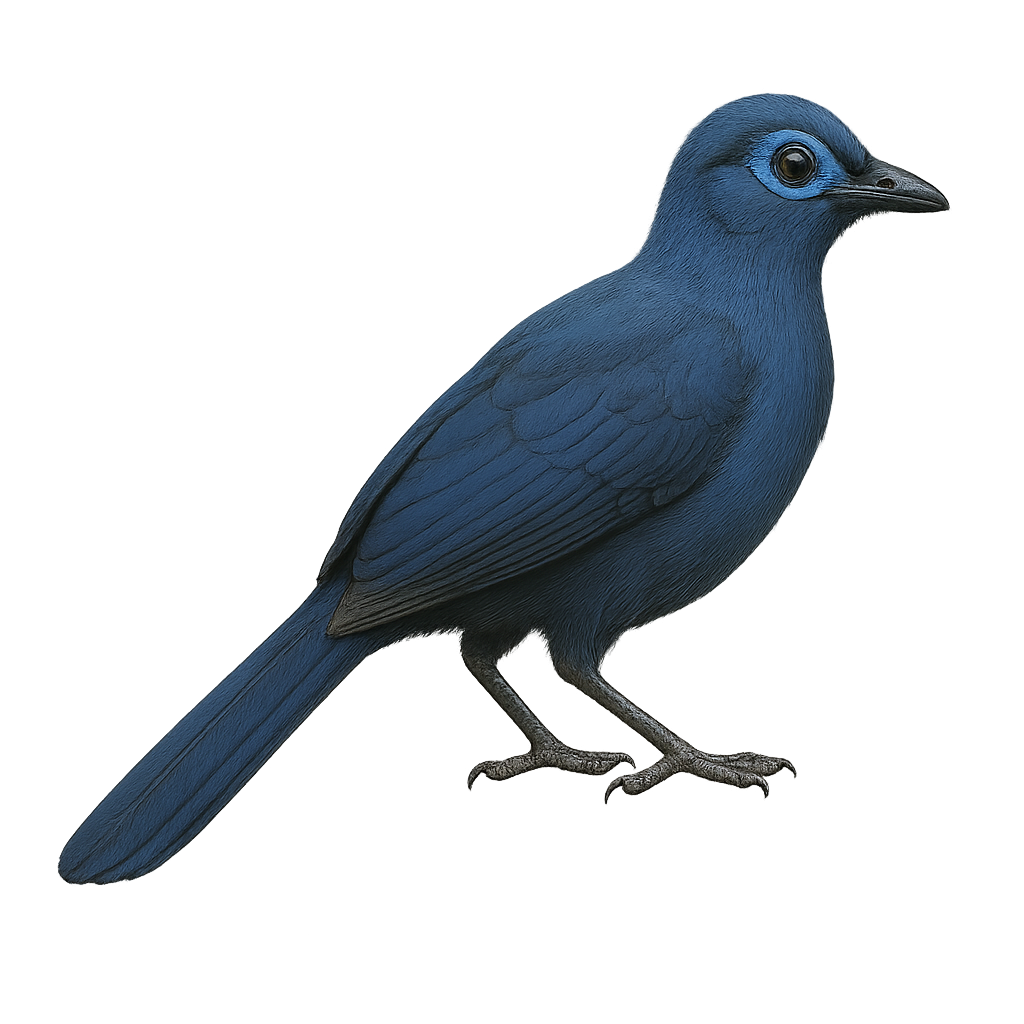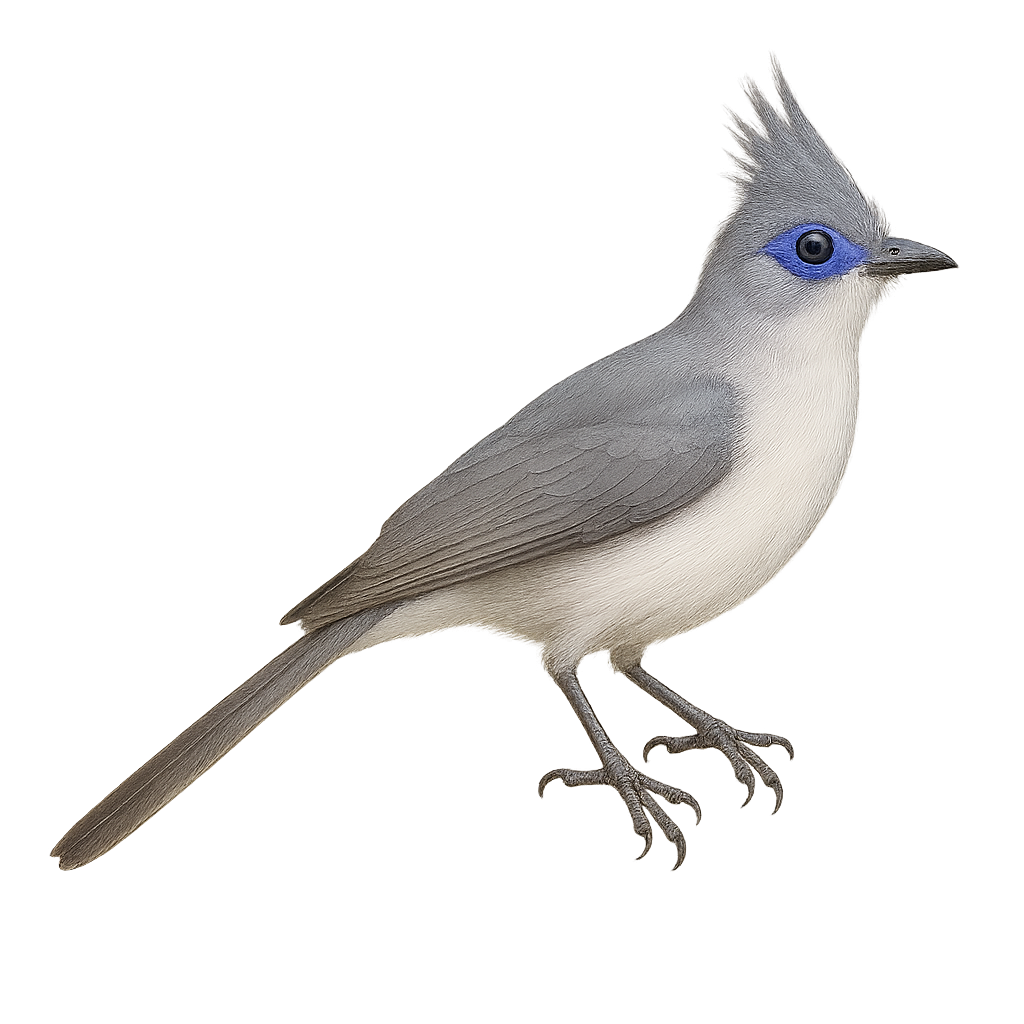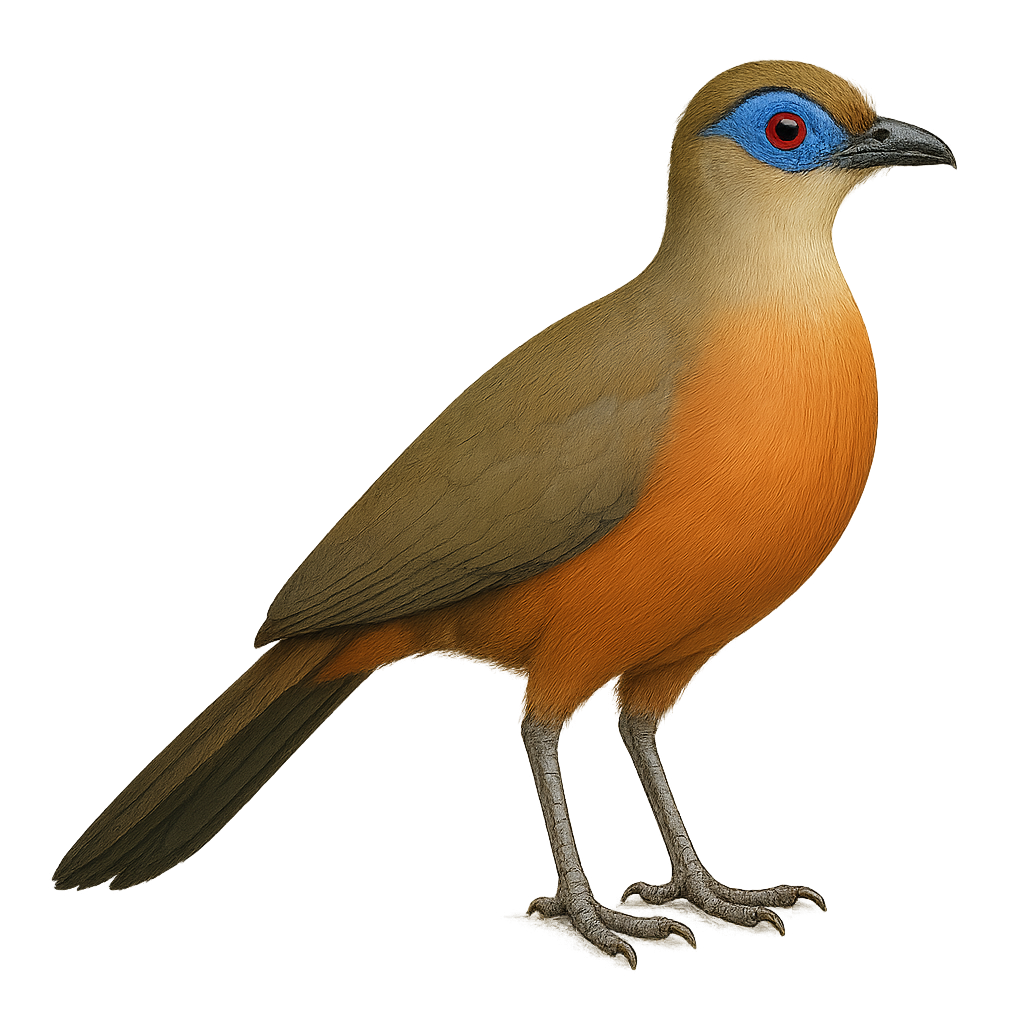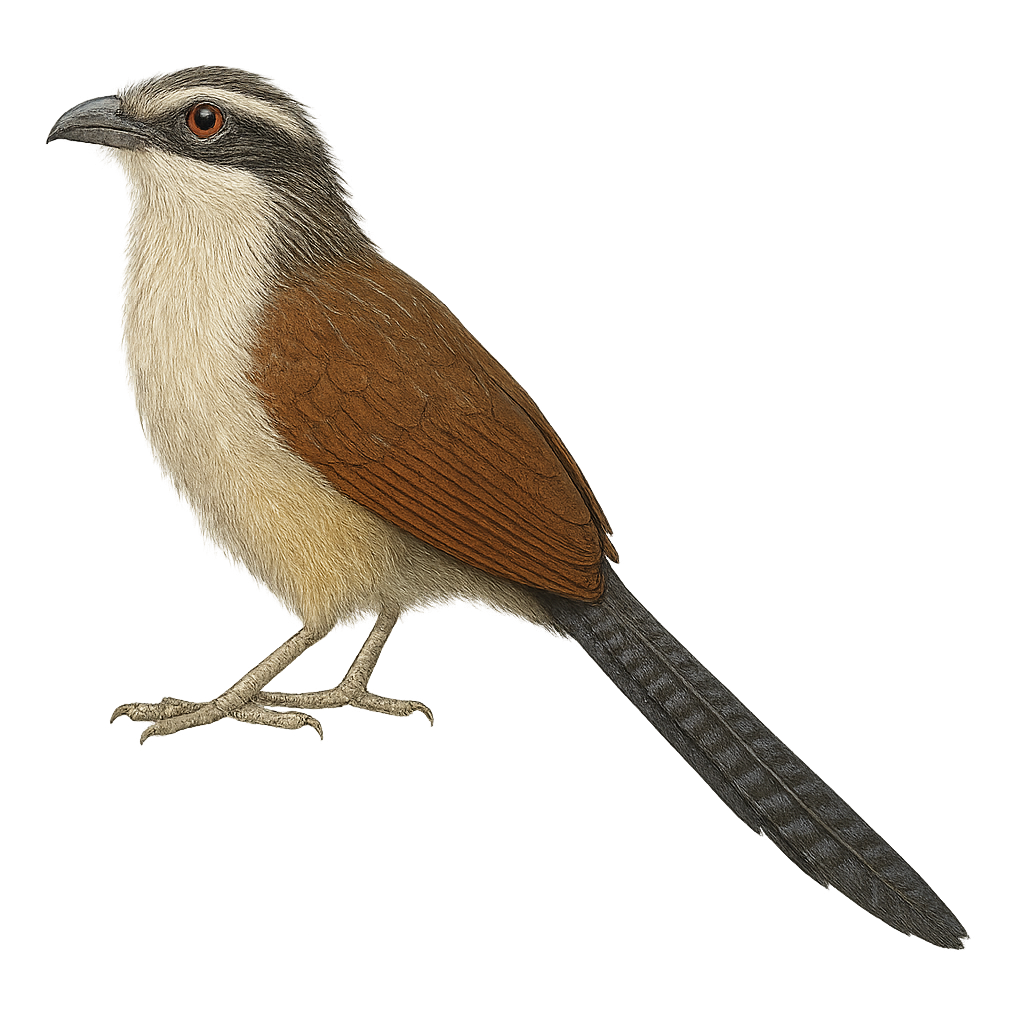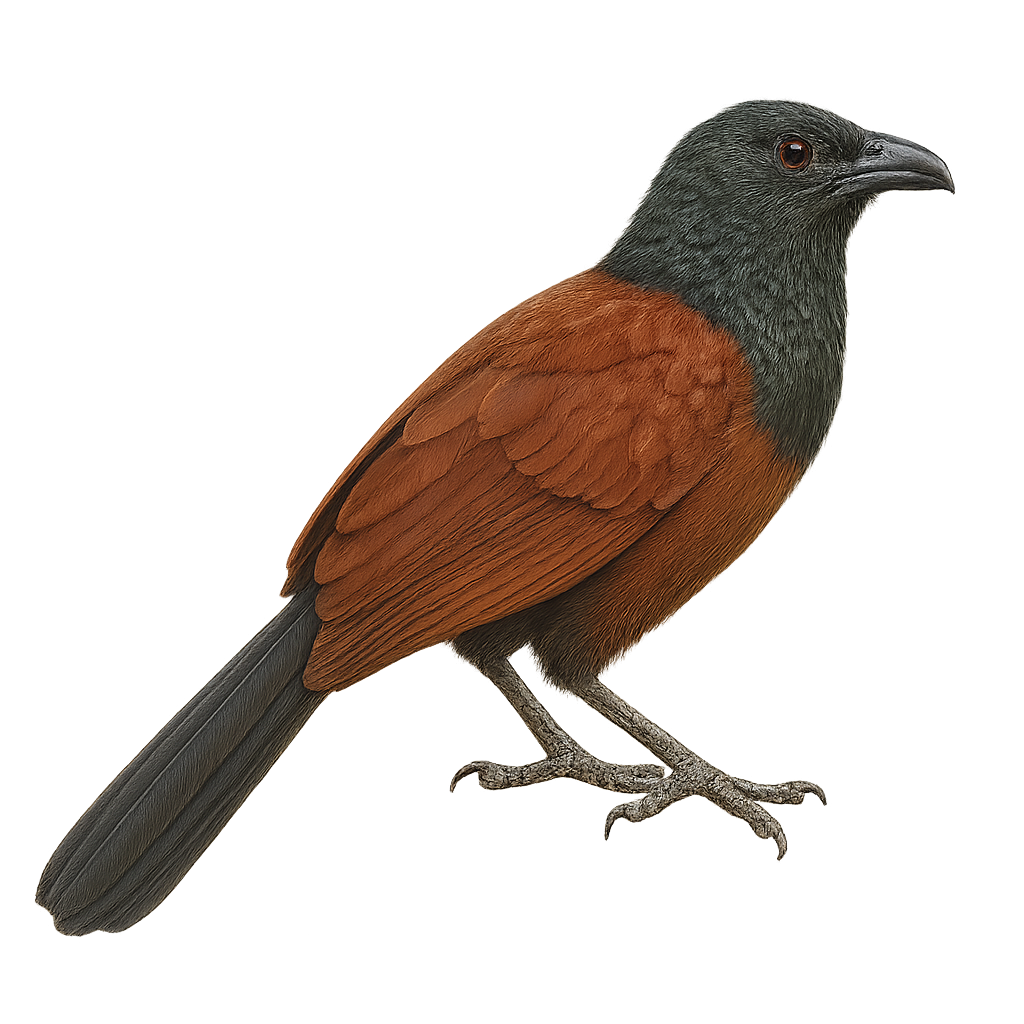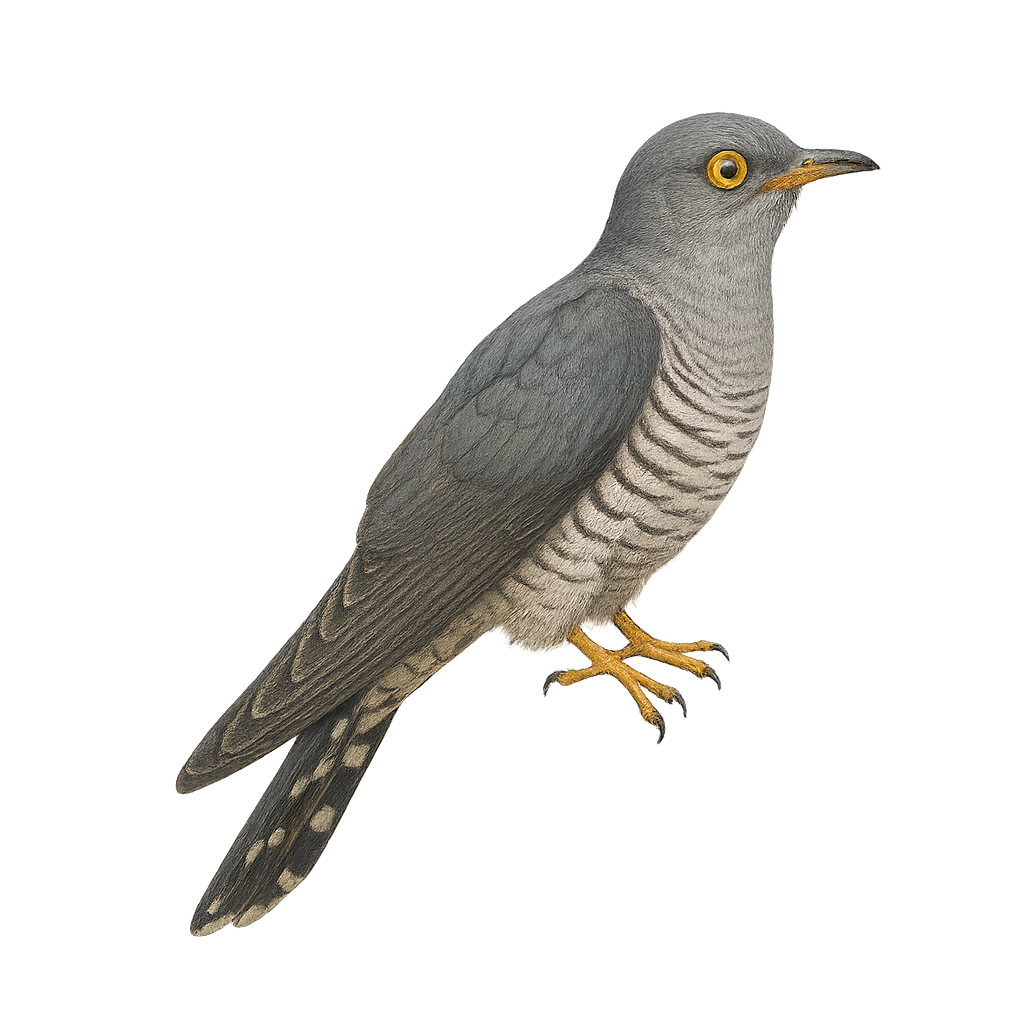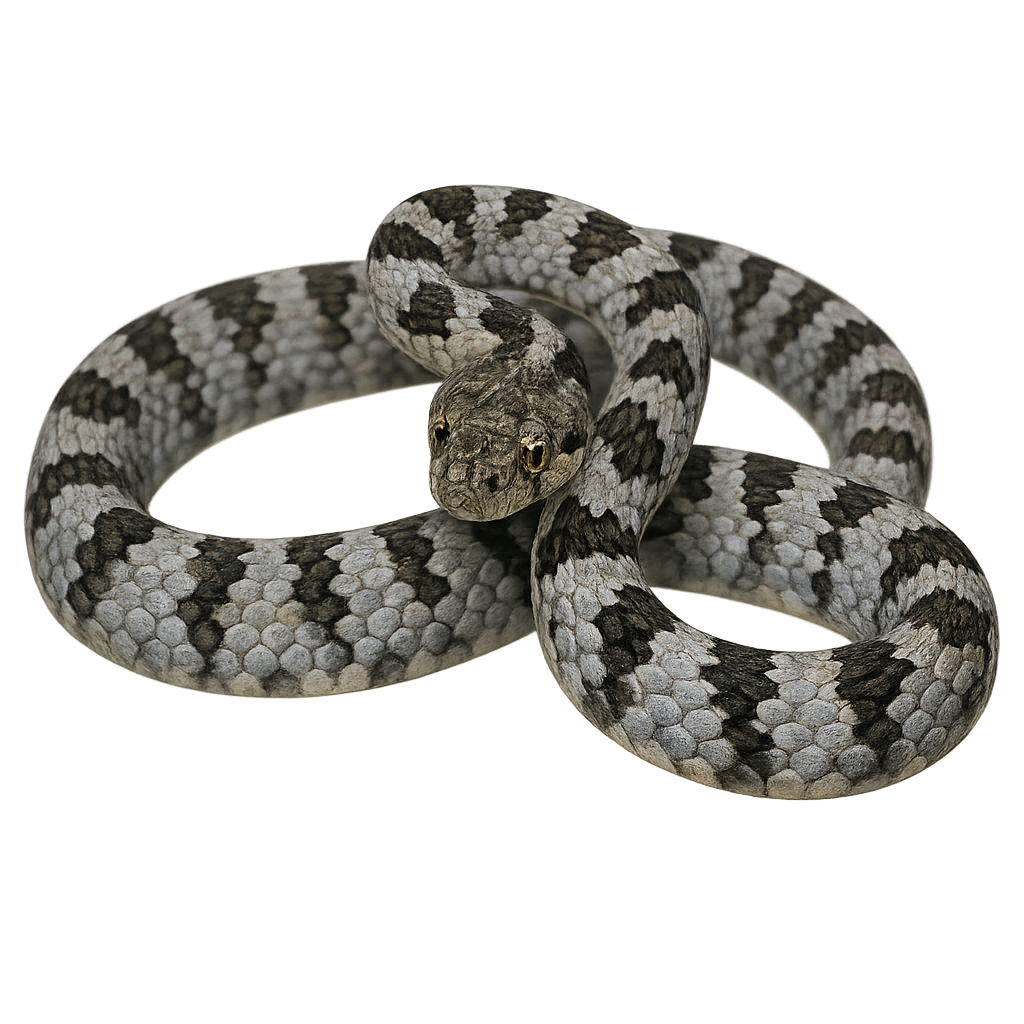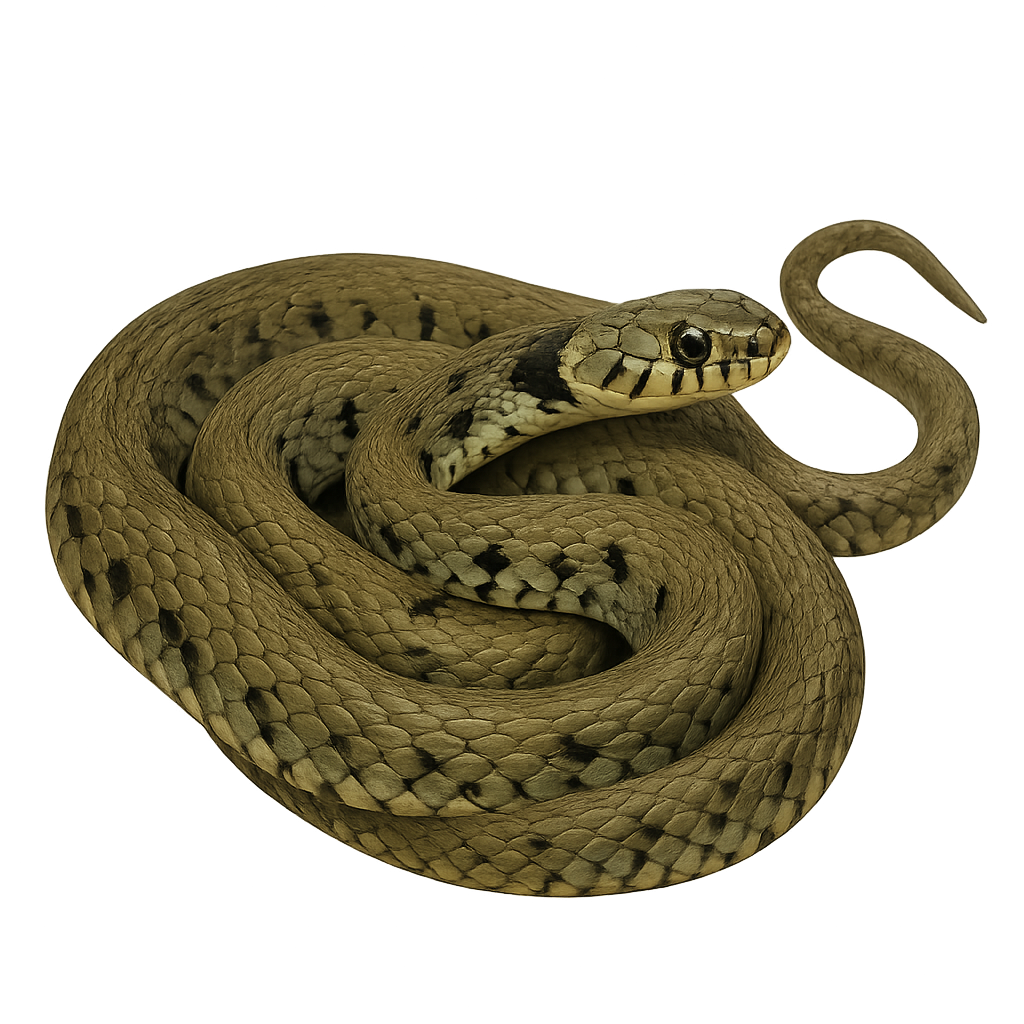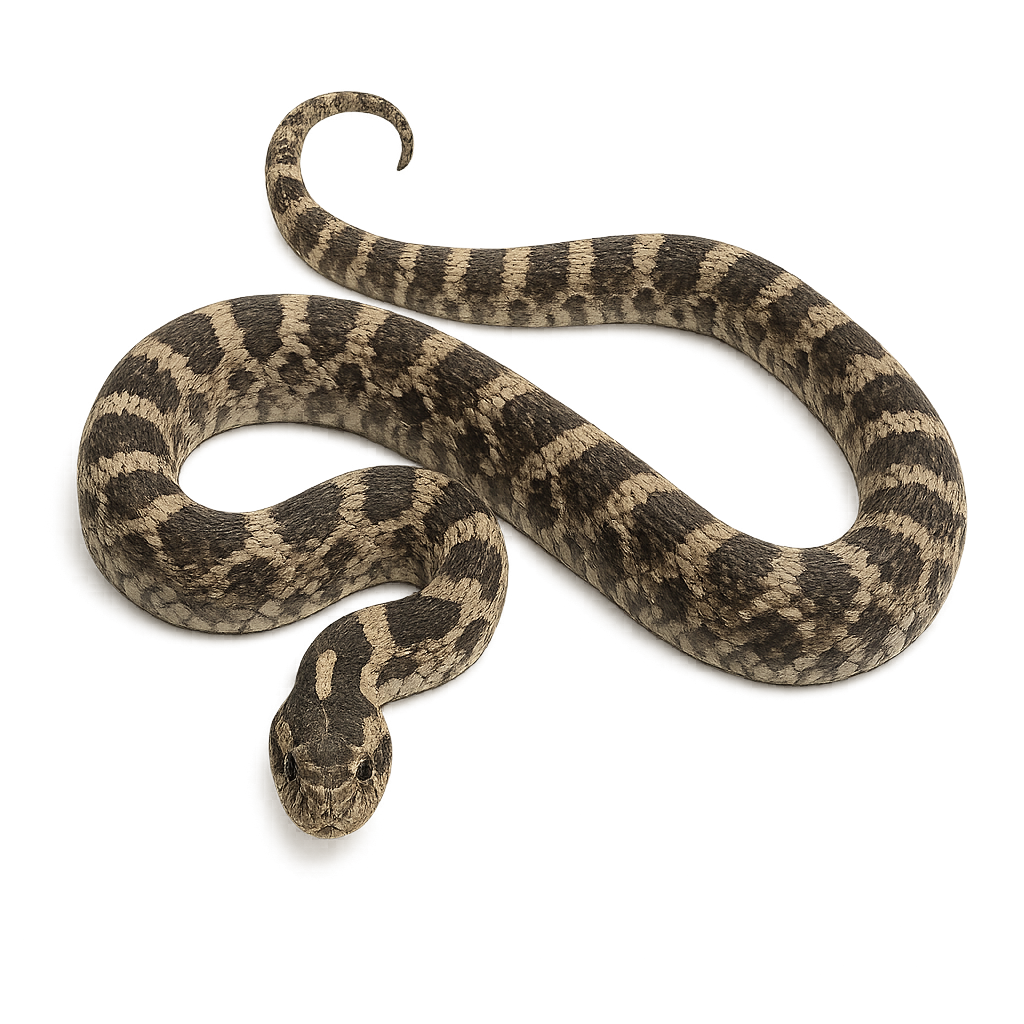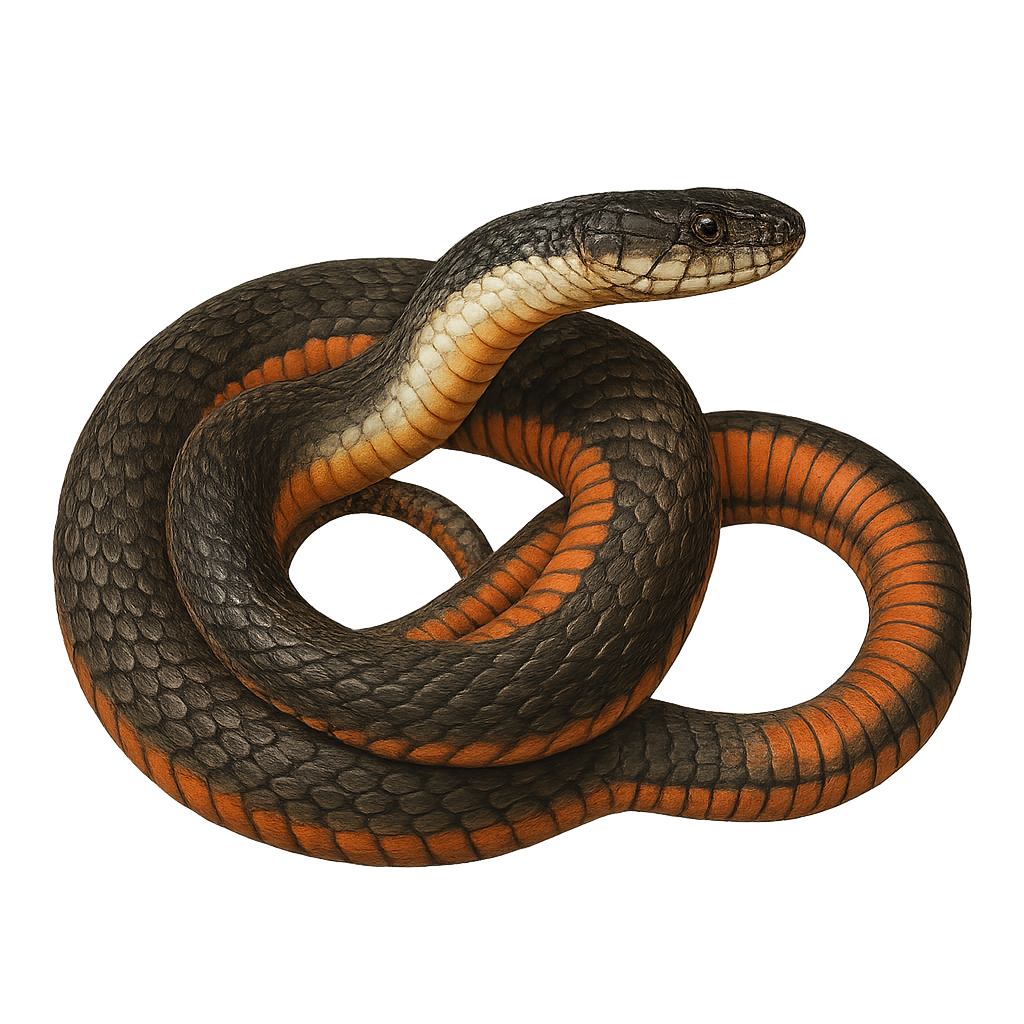The little cormorant is a small cormorant, 45–55 cm long, with glossy black plumage and white wing patches in flight, inhabiting marshes, lakes, rivers and freshwater wetlands. It feeds mainly on fish by diving beneath the surface. During breeding, pairs build stick nests in waterside trees or shrubs, and the male displays by erecting head and neck feathers.
The neotropic cormorant is a medium-sized waterbird (65–75 cm) with glossy black plumage accented by bronze tinges on the back and white underparts. It inhabits freshwater bodies and coastal areas, fishing in groups through successive dives to catch fish and crustaceans.
The American Crow, scientifically known as Corvus brachyrhynchos, is a medium-sized bird, measuring about 40 to 50 cm in length with a wingspan of 85 to 100 cm. Its plumage is entirely black with metallic sheens under light. This bird is highly adaptable and can be found in various habitats, including forests, fields, and even urban areas. It is omnivorous, feeding on fruits, insects, small animals, and human waste. The American Crow is known for its remarkable intelligence, capable of using tools and solving complex problems. It usually lives in groups and communicates through a series of calls and caws.
The Cape Crow, or Corvus capensis, is a medium-sized bird known for its glossy black plumage and sturdy beak. It is primarily found in southern Africa, where it inhabits savannas, grasslands, and agricultural areas. This crow is noted for its intelligence and adaptability to various environments. It feeds mainly on insects, small vertebrates, and seeds. The Cape Crow is often seen in groups, which helps protect it from predators. Its voice is distinctive, with harsh and varied calls. Although generally wary of humans, it can become accustomed to their presence in undisturbed areas.
The hooded crow, Corvus cornix, is a medium-sized bird belonging to the corvid family. It is easily recognizable by its two-tone plumage, with a light gray body and black wings, head, and tail. Often seen in open landscapes, agricultural areas, and cities, it is an opportunistic feeder, consuming a wide range of foods from insects to small mammals and human waste. Highly intelligent, it is known for its problem-solving abilities. Social in nature, it often forms noisy groups. Although its call is harsh, it can mimic other sounds.
The carrion crow is a 44–51 cm corvid, all black with a stout bill and strong flight. It inhabits urban areas, farmland and open woodlands across Europe and Asia, feeding on insects, small vertebrates, seeds and carrion, and scavenging human refuse. An opportunistic omnivore, it uses tools and caches food. During the breeding season (March–May), pairs defend a territory, build a large branch nest and raise 3–5 young.
The Philippine Hanging Parrot, or Loriculus philippensis, is a small, vibrantly colored parrot endemic to the Philippines. Measuring about 14 cm in length, it is characterized by its bright green plumage, a red patch on the forehead, and a short tail. Males and females are similar, although males often have brighter colors. These birds primarily inhabit tropical rainforests but can also be found in plantations and gardens. They are known for their acrobatic behavior, often hanging upside down to feed on fruits, flowers, and nectar. Their song is a mix of whistles and chirps.
The Vernal Hanging Parrot, or Loriculus vernalis, is a small Asian parrot with vibrant green plumage and a distinctive blue head. This charming bird measures about 14 cm in length and is characterized by its short tail and rounded wings. It is primarily arboreal, inhabiting tropical rainforests, mangroves, and plantations. Its diet consists of fruits, flowers, and nectar. The Vernal Hanging Parrot is known for its ability to sleep upside down, hanging from a branch. Although relatively common within its range, it is often threatened by deforestation and capture for the pet trade.
The Collared Gnatwren is a small, elusive bird native to the humid tropical forests of South America. It is identifiable by its olive-brown plumage and distinctive white collar contrasting with its dark throat. Measuring about 12 cm in length, this bird is often seen skittering through dense underbrush in search of insects. It is particularly active at dusk and dawn, when it emits soft, melodious calls. Although not very shy, it remains difficult to spot due to its dense habitat and discreet nature. Its social behavior is mostly solitary, although it can sometimes be seen in small family groups.
The Southern Antpipit is a small, elusive bird found primarily in the humid forests of South America, particularly in Brazil and Argentina. Its plumage is mainly brown with lighter shades on the belly, allowing it to blend seamlessly into its surroundings. It is often seen foraging for insects on the forest floor, moving nimbly among the leaf litter. Although not very shy, it remains cautious around humans and prefers undisturbed areas. Its song is a gentle whistle, often heard at dawn and dusk.
The Coscoroba Swan is a medium-sized waterbird often mistaken for a swan due to its pure white plumage and graceful long neck. It is distinguished by its bright red bill and pinkish legs. Native to South America, it inhabits lakes, marshes, and lagoons, feeding mainly on aquatic plants, insects, and small crustaceans. Although sociable, it can be territorial during the breeding season. The Coscoroba Swan is an excellent swimmer, using its wings to propel itself on water. Its population is stable, but it remains vulnerable to environmental changes and habitat loss.
The Rüppell's Robin-Chat, or Cossypha semirufa, is a medium-sized bird, measuring about 19 cm in length. It is distinguished by its striking plumage, with a slate-grey head and back, vivid rufous belly, and orange tail. This bird is primarily insectivorous, feeding on various insects and spiders, but it can also consume berries. It is often found in open forests, wooded savannas, and gardens, where it is known for its melodious and varied song. The Rüppell's Robin-Chat is a territorial bird, often seen alone or in pairs, and is particularly active at dusk and dawn.
The Natal Robin is a medium-sized songbird known for its vibrant plumage and melodious song. It features a grey head and back, with a bright orange throat and belly. This bird is often seen in dense forests and shaded gardens of southern Africa. It is known for its curious nature and territorial behavior, often spotted hopping on the ground in search of insects and fruits. Although generally solitary, it can sometimes be seen in small family groups. Its ability to adapt to various habitats makes it a common resident within its range.
The Porphyrolaema porphyrolaema is a fascinating bird belonging to the Cotingidae family. It is distinguished by its glossy black plumage and striking purple throat, giving it a majestic appearance. This bird is primarily found in the humid tropical forests of South America, where it feeds mainly on fruits and insects. It is often seen in small groups, making it easier to spot. Although its behavior is generally suspicious, it can be tolerant of discreet observers. Its breeding period is still poorly understood, but protecting its habitat is essential for its survival.
The Barred Fruiteater, or Pipreola arcuata, is a captivating bird found in the humid forests of the Andes. It is distinguished by its bright green plumage and vivid yellow belly, contrasting with dark bars on its chest. This elusive bird is often hard to spot, blending into the dense foliage. It primarily feeds on fruits, playing a crucial role in seed dispersal in its habitat. Its presence is an indicator of the health of Andean forests. The Barred Fruiteater is a solitary bird but can sometimes be seen in small groups. Its call is a soft whistle, often heard before it is seen.
The Lovely Cotinga is a tropical bird notable for its vibrant plumage. The male displays a brilliant turquoise blue with a deep purple throat and chest, while the female has more subdued grayish-brown plumage with scaly patterns. This species inhabits lowland humid forests and woodland edges in Central America, from southern Mexico to Costa Rica. Primarily frugivorous, it plays a crucial role in seed dispersal. Although globally listed as "Least Concern," deforestation poses a threat to its natural habitats.
The Spangled Cotinga is a striking bird known for its vibrant plumage and elusive presence in the tropical forests of South America. Males display bright blue feathers with a purple throat, while females are more subdued with brownish tones. This bird is often seen perched high in the canopy, feeding primarily on fruits. Its song is infrequent but distinctive, aiding in its identification. The Spangled Cotinga plays a crucial role in seed dispersal, thus supporting forest regeneration. Although its habitat is threatened by deforestation, it is currently listed as of least concern by the IUCN.
The Green-and-black Fruiteater, or Pipreola riefferii, is a striking bird found in Andean montane forests from Venezuela to northern Bolivia. Males show vivid green upperparts, a bold black belly, and a bright yellow throat, while females are duller with streaked underparts. This secretive species often remains motionless in the canopy or dense undergrowth, feeding primarily on fruit. It prefers humid forests between 1,500 and 3,000 meters in elevation. Usually seen alone or in small groups, the species is considered stable but can be affected by forest fragmentation.
The Blue Coua is an endemic bird of Madagascar, belonging to the Cuculidae family. It is distinguished by its striking blue plumage and medium size, measuring about 48 to 50 cm in length. This bird is primarily arboreal, moving nimbly through the island's tropical rainforests. It feeds mainly on insects, fruits, and small invertebrates. The Blue Coua is known for its melodious song and varied calls, often heard at dawn and dusk. Although its habitat is threatened by deforestation, it is currently classified as "least concern" by the IUCN.
The Verreaux's Coua is an endemic bird of Madagascar, belonging to the Cuculidae family. It is characterized by its predominantly blue-grey plumage with lighter shades on the belly. This medium-sized bird measures about 40 cm in length. It is often found in the dry forests and shrublands of southern Madagascar. The Verreaux's Coua is a terrestrial bird that prefers walking or running to flying. It primarily feeds on insects, small invertebrates, and occasionally fruits. Although its conservation status is concerning due to habitat loss, it remains relatively unknown to the general public.
The Giant Coua, or Coua gigas, is a bird endemic to Madagascar, belonging to the Cuculidae family. It is recognizable by its blue-gray plumage and long tail. This terrestrial bird prefers dry forests and savannas, where it feeds mainly on insects, fruits, and small reptiles. The Giant Coua is diurnal, active mainly in the morning and late afternoon. Although capable of flight, it prefers to move by running. It is known for its melodious song and varied calls. The Giant Coua plays an important role in the ecosystem as an insect predator and seed disperser.
The Centropus superciliosus, or White-browed Coucal, is a bird from the Cuculidae family, widely distributed in sub-Saharan Africa. It is recognizable by its distinctive white eyebrows contrasting with its brown and black plumage. This bird prefers dense habitats such as wooded savannas, marshes, and riparian forests. It is primarily terrestrial, often moving on foot in search of prey like insects, small reptiles, and amphibians. The White-browed Coucal is known for its distinctive call, a deep, resonant "bouhou". Although relatively common, it remains discreet and difficult to observe due to its suspicious behavior.
The Bengal Coucal, or Centropus bengalensis, is a fascinating bird belonging to the Cuculidae family. It is primarily found in the humid and marshy regions of South and Southeast Asia. This bird is distinguished by its dark brown plumage and rufous wings, which contrast with its black head and tail. The coucal is a medium-sized bird, measuring about 40 to 50 cm in length. It is known for its discreet behavior and ability to move silently through dense undergrowth. The Bengal Coucal is an opportunistic predator, feeding on insects, small reptiles, and sometimes small mammals. Although it is mainly terrestrial, it can fly short distances.
The Common Cuckoo, Cuculus canorus, is a migratory bird known for its distinctive call and brood parasitism behavior. It measures about 32 to 34 cm in length with a wingspan of 55 to 60 cm. Its plumage is primarily gray with lighter shades on the belly. The Common Cuckoo is famous for laying its eggs in the nests of other birds, leaving the foster parents to raise its young. It inhabits various environments, including forests, grasslands, and wetlands. Widely distributed across Europe and Asia, it migrates to sub-Saharan Africa for the winter. Its call, a repeated "cuckoo," is often heard in spring.
The Telescopus fallax, commonly known as the European Cat Snake, is a medium-sized snake, typically measuring between 70 and 100 cm in length. Its coloration ranges from gray to brown, often adorned with dark saddle-shaped patterns. This snake is primarily nocturnal and feeds on small vertebrates, including lizards and rodents. It has rear-fanged venomous teeth, but its venom is harmless to humans. Found in Mediterranean regions, it prefers rocky and dry habitats. Although discreet, it can be observed during its nocturnal outings.
The European Water Snake is a non-venomous species of snake, easily recognized by the distinct black or brown collar-like markings around its neck. Its body is typically olive or brown, with lighter patterns on the back and sides. This snake typically measures between 50 and 100 cm long, although it can sometimes reach up to 1.5 meters in rare cases.
The European Water Snake primarily inhabits wetland areas, such as lake shores, rivers, and marshes. It is highly agile and spends most of its time hunting fish, amphibians, and small reptiles, which it captures by diving or swimming. Though mainly terrestrial, it is also an excellent swimmer. The species is protected in some areas due to habitat loss. The European Water Snake plays an important role in regulating amphibian populations and controlling small aquatic animals.
The Common European Water Snake is a non-venomous snake species, easily recognized by the distinctive black patch that forms a collar around its neck. It is typically olive green to gray in color, with lighter patterns on the belly and small black spots on the back. It can grow up to 1.5 meters in length, although the average size is around 1 meter.
This snake primarily inhabits wetland areas, such as lake shores, marshes, and rivers, where it primarily hunts fish, amphibians, and small reptiles. It is a very good swimmer and spends much of its time in the water, using its diving skills to capture prey. While it is fairly common, it may be threatened by the destruction of its natural habitats, pollution, and illegal collection. The Common European Water Snake is protected in several regions of its range.
The four-lined snake, Elaphe quatuorlineata, is a non-venomous snake primarily found in southern Europe. It is recognizable by its four dark stripes running along its yellowish-brown body. Typically measuring between 100 and 200 cm, it is one of the largest snake species in Europe. It prefers dry, rocky habitats, open woodlands, and agricultural areas. Although terrestrial, it is also a good climber. It mainly feeds on small mammals, birds, and eggs. Its behavior is generally calm, but it can become defensive if threatened.
The Nerodia erythrogaster, commonly known as the plain-bellied water snake, is a non-venomous aquatic snake found primarily in the southeastern United States. It is recognizable by its reddish or orange belly, contrasting with its typically brown or dark gray back. Measuring between 60 and 120 cm in length, it is often seen near freshwater bodies such as marshes, rivers, and lakes. Although primarily aquatic, it can also be found on land, especially when basking in the sun. It primarily feeds on fish and amphibians. Its breeding season occurs in spring, and it gives birth to live young, usually between July and September.
The Aesculapian Snake is a non-venomous, long and slender snake that can reach up to 2 meters in length. Its coloration ranges from olive green to brown, with smooth scales and a metallic sheen. It inhabits temperate forests, hedgerows, fallow lands, and rocky areas, often near human settlements. It is diurnal and arboreal, primarily feeding on small mammals, birds, lizards, and eggs. Reproduction occurs in spring, with 2 to 18 eggs laid and incubated for 6 to 10 weeks. Protected species in Europe, it is listed as Least Concern by the IUCN.


